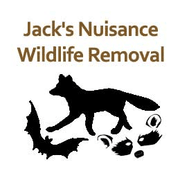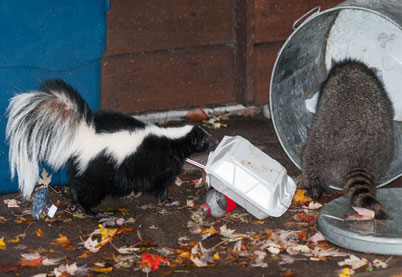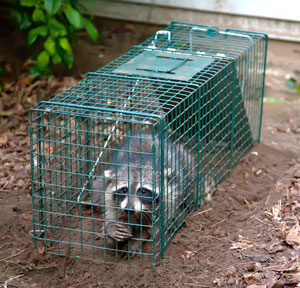New York State
Nuisance Wild Animal Removal
Nuisance Wild Animal Removal
Directory of Nuisance Wild Animal Control & Removal Specialists
88 Old Orchard · Williamsville, NY 14221 ·
716-208-5110 · join@nuisancewildanimalremoval.com
Your Local Wild Animal Removal & Control Business in Eastern Hills, New York:
JACK'S NUISANCE WILDLIFE REMOVAL

716-208-5110
jack@jacksnuisancewildliferemoval.com
http://jacksnuisancewildliferemoval.com
Jack's Nuisance Wildlife Removal is the best is a full-service nuisance wildlife control company servingthe following areas:
- Akron, Alden, Amherst, Buffalo - Downtown, Cheektowaga, Clarence, Cleveland Center, Colden, Collins, Delavan, Depew, Derby, East Aurora, East Concord, Eden, Elma, Grand Island, Hamburg, Holland, Kenmore, Lackawanna, Lake View, Lancaster, Lewiston, Lockport, Marilla, Niagara Falls, North Eastern Hills, North Tonawanda, Orchard Park, Sloan, Snyder, South Wales, Springville, Tonawanda, Wales Center, West Falls, West Seneca, Williamsville, Woodlawn, Wyoming County.
Jack's Nuisance Wildlife Removal specialize in urban and suburban wildlife damage management for both residential and commercial customers. They're state licensed by the New York Fish & Wildlife Commission, and they'll handle nearly all aspects of wildlife control, and resolve conflicts between people and wildlife in a humane and professional manner. They'll ensure the nuisance animals wont return or further damage your home or property. Jack's Nuisance Wildlife Removal can help you with any of your nuisance wildlife issues, including:
- Bats, Beavers, Birds, Chipmunks, Crows, Foxes, Mice, Mink, Moles, Muskrats, Opossums, Pigeons, Rabbits, Raccoons, Rats, Skunks, Snakes, Squirrels, Starlings, Voles
General Services offered by Jack's Nuisance Wildlife Removal beyond nuisance animal removal:
- Animal Capture and Removal
- Humane wildlife control
- Wild animal control
- Dead animal removal
- Poison free rodent control, live trapping
- Humane Exclusion
- Odor diagnosis and abatement
- Noise diagnosis
- Prevent future entry by sealing entry points
- Structure repair
- Chimney cap installation
Cleanup After Nuisance Animal Removal:
When nuisance animals have been removed from your home or business, your local wildlife control specialist will help you address the damages these animals caused to make sure that no other unwanted animals can enter your home. In some cases, squirrels have chewed their way into your attic, or maybe raccoons have broken through your siding and ripped through your woodwork and insulation. Some other examples of standard entry points are chimneys, soffits, attic fans, gable vents, ridge vents, and dormers. When your local wildlife control specialist evaluates animal damage repair projects, they will utilize the proper products and procedures to eliminate entry to your home. On top of this, your local technicians will recommend preventative methods to ensure. If your local technicians can't repair the damages, like if electrical work is needed due to chewed wires, they will offer suggestions on who to call and how to handle it.

Nuisance Wild Animal Removal Resource Site offers a list of professionals who trap, capture and remove unwanted animals from residential homes and businesses. They handle nearly all aspects of wildlife control, and resolve conflicts to ensure the nuisance animals wont return or create more damage. And repair damages caused by the animal. Some of the many nuisance animals and trapping methods are listed below. When possible, wild animals are caught and released humanely.
Coyote & Coyote Removal:
Coyote is a member of the dog family usually weigh 30 to 40 lb, though there are some examples up to 75 pounds. coyotes are south of wolf populations. Foothold or jump trapsvare used. Since coyote are canines, the same trap sets that are used for fox can be used for coyotes.
Fox & Fox Removal:
The red and gray fox are canines that inhabit mixed forest and field areas. They eat various foods such as mice, rabbits, birds and fruit. They are a challenging animal to trap as they have a highly developed sense of smell. Leg hold traps are usually used to catch fox, although some use snares.
Muskrats & Muskrat Removal:
Muskrats are rodents that live in freshwater swamps, streams, ponds, lakes and brackish tidal waters. Muskrats have brown fur in freshwater and black fur in brackish water. They live in bank dens or small lodges made of weeds. Lodges can be up to three feet high. Muskrats follow trails in the streams or swamps where they live, thus they can be fairly easy to catch. Traps are placed on a muskrat trail or in front of den entrances.
Mice & Mice Removal: Mice can be considered vermin which are a major source of crop damage causing structural damage and spreading diseases through their parasites and feces. Breathing dust that has come in contact with mouse excrement has been linked to hantavirus, which may lead to hantavirus pulmonary syndrome. Mice are small rodents that are very abundant and widespread, trapping them is done with many varieties of mousetrap. Mice are trapped for pest control. Spring-loaded mousetrap are the normal trapping methods.
Moles & Moles Removal: Moles are considered agricultural pests. Moles burrow and raise molehills, killing parts of lawns. They can undermine plant roots, indirectly causing damage or death. Moles do not eat plant roots. Moles are controlled with traps such as mole-catchers, smoke bombs, and poisons such as calcium carbide.

Rats & Rats Removal:
Rats are medium-sized rodents that are larger than mice, trapping them is done with rat traps.
Raccoons & Raccoons Removal:
Raccoons are nocturnal animals. They travel near streams, ponds, rivers and along fields or swamps. Jump traps are typically used by placing them in a shallow pit.
Skunks and Opossums & Their Removal:
Skunks are weasels and opossums are marsupials and both prefer a variety in their diet. They travel in upland areas around barns and farm areas. They like mice, berries, fruits, apples, carrion, insects, eggs, birds, and dead animals. Long spring or jump traps are normally used.
Snakes & Snakes Removal:
Snakes are elongated, legless, carnivorous reptiles that lack eyelids and external ears. Most species are nonvenomous and those that have venom use it primarily to kill and subdue prey rather than for self-defense. Some possess venom potent enough to cause painful injury or death to humans. Nonvenomous snakes either swallow prey alive or kill by constriction. It's recommended you hire a licensed professional who knows how to remove snakes properly.
Squirrels & Squirrels Removal:
Many members of the Squirrel family hide food for later recovery. Some caches are quite temporary, especially those seen near a site of where there is alot of food. Food that can be retrieved within hours or days later. To trap squirrels and to make sure they do not return. For Squirrel, some use a small, live cage trap secured in place. Then Relocate them.
Wildlife Control Businesses in New York
- Akron Wild Animal Removal
- Albany Catching Wild Animals
- Alden Catching Wild Animals
- Alexandria Bay Trapping Wild Animals
- Allegany County Wild Animal Removal
- Amherst Wild Animal Removal
- Angola Catching Wild Animals
- Avenue Trapping Wild Animals
- Beacon Wild Animal Removal
- Belmont Catching Wild Animals
- Binghamton Trapping Wild Animals
- Blasdell Wild Animal Removal
- Boulevard Catching Wild Animals
- Bolton Landing
- Bronx Wild Animal Removal
- Schnectady Catching Wild Animals
- Buffalo Trapping Wild Animals
- Canton Wild Animal Removal
- Caramel Catching Wild Animals
- Cattaraugus County Wild Animals
- Cayuga Heights Animal Removal
- Cazenovia Catching Wild Animals
- Chaffee Trapping Wild Animals
- Chamber Wild Animals
- Cheektowaga Catching Wild Animals
- Clarence Trapping Wild Animals
- Cleveland Catching Wild Animals
- Colden Wildlife Control
- Collins Catching Wild Animals
- Cortland Trapping Wild Animals
- Cortland County Wild Animal Control
- Cortlandville Trapping Wild Animals
- Cuba Catching Wild Animals
- Delavan Trapping Wild Animals
- Depew Catching Wild Animals
- Derby Catching Wild Animals
- Dewitt Catching Wild Animals
- Dryden Trapping Wild Animals
- Dutchess County Wildlife Removal
- East Aurora Catching Wild Animals
- East Concord Trapping Wild Animals
- Eastern Hills Trapping Wild Animals
- Eden Catching Wild Animals
- Ellicottville Nuisance Wildlife Removal
- Elma Catching Wild Animals
- Fayetteville Animal Control
- Fillmore Nuisance Wildlife Removal
- Glens Falls Wild Animal Removal
- Glenwood Catching Wild Animals
- Grand Island Catching Wild Animals
- Grove Nuisance Wildlife Removal
- Hamburg Trapping Nusiance Animals
- Henderson Harbor Animal Removal
- Holland Trapping Wild Animals
- Homer Catching Wild Life
- Houghton Catching Wild Animals
- Ithaca Wild Animal Removal
- Kenmore Animal Control
- Lackawanna Catching Wild Animals
- Lake George Animal Control
- Lake Placid Catching Wild Animals
- Lake Pleasant Wild Animal Removal
- Lake View Catching Animals
- Lancaster Trapping Animals
- Lansing Trapping Nusiance Animals
- Lewiston Wild Animal Removal
- Little Valley Catching Wild Animals
- Lockport Catching Animals
- Madison County Trapping Animals
- Malone Wild Animal Removal
- Manhattan Nuisance Wildlife Removal
- Manlius Wild Animal Control
- Marathon Nuisance Wildlife Removal
- Marilla Wild Animal Removal
- Mayville Removing Wild Animals
- Monticello Wildlife Control
- Nassau County Wild Animal Removal
- New Rochelle Catching Wild Animals
- New York City Catching Wild Animals
- Niagara Falls Area Wildlife Control
- North Collins Wild Animal Removal
- N. Tonawanda Wild Animals
- Olean Wildlife Control
- Onieda Wild Animal Removal
- Onondaga Nuisance Wildlife Removal
- Orchard Park Animal Control
- Parkside Catching Animals
- Plattsburgh Wild Animal Removal
- Polish Wildlife Control Businesses
- Poughkeepsie Animal Control
- Putnam County Wild Animal Removal
- Queens Nuisance Wildlife Removal
- Queensbury Wildlife Management
- Ransomville Animal Control
- Salamanca Wild Animal Removal
- Sanborn Animal Removal
- Saratoga Nuisance Wildlife Removal
- Sardinia Wild Animal Removal
- Schnectady Nuisance Wildlife Removal
- Snyder Nuisance Wildlife Removal
- Solan Catching Wildlife Animals
- South Wales Removing Wild Animals
- Springville Wild Animal Removal
- Staten Island Wild Animals
- Suffolk County Animal Control
- Syracuse Wild Animal Removal
- Tompkins County Catching Animals
- Tonawanda Nuisance Animals
- Utica Wild Animal Removal
- Valley Animal Removal
- Wales Center Wildlife Control
- Warrensburg Wildlife Management
- Watertown Catching Animals
- Wellsville Wild Animal Removal
- Westchester County Wildlife Control
- West Falls Nuisance Wildlife Removal
- West Seneca Wild Animal Removal
- Williamsville Wildlife Control
- Woodlawn Animal Control
- Wyoming County Wild Animals
- Yonkers Wildlife Animals
- Youngstown Wildlife Removal